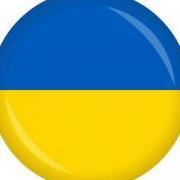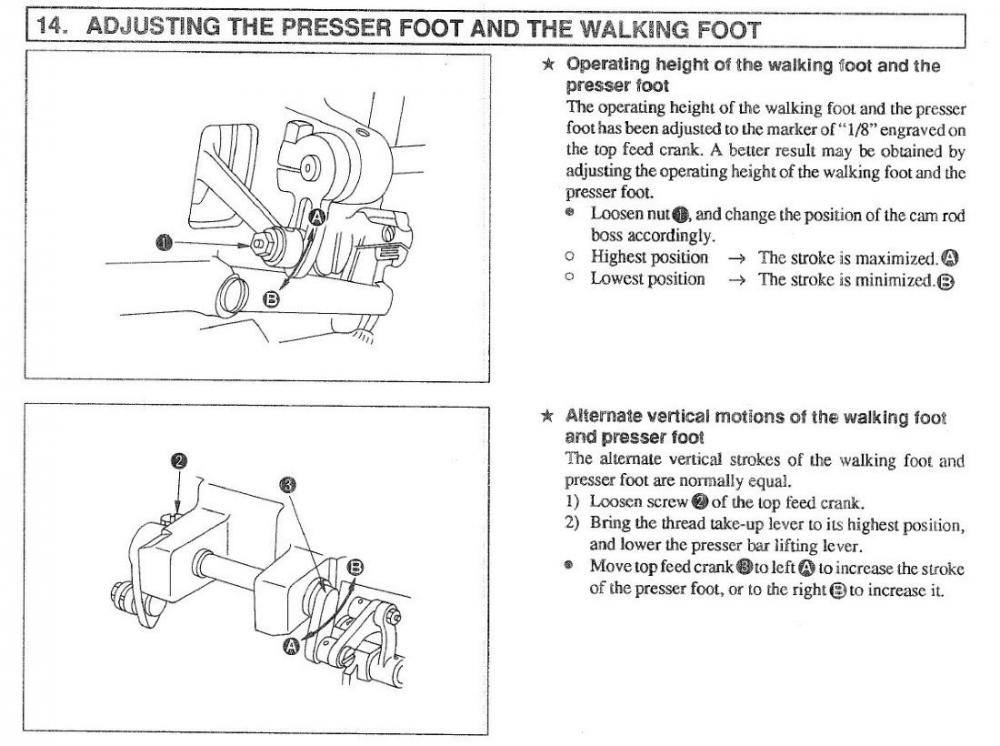-
Posts
5,687 -
Joined
-
Last visited
Content Type
Profiles
Forums
Events
Blogs
Gallery
Posts posted by Constabulary
-
-
the 20-4 is the one with a geared speed reducer (seems some gears the a gear support bracket are missing) but afaik the 20-7 is the one with the 2nd presser foot. But not I´m 100% sure. Maybe a combination of both features leads to another subclass.
-
On 3/9/2019 at 5:48 AM, wilsonintexas said:
2100/3 polyester thread
what therad size exactly is this - have you mistyped? And what machine model are you using? Probably a problem with the thread path? Thread keeps hanging somewhere? Burr in needle eyed on on some thread guides? Too much thread tension (top and bottom)? Needle bar probably a tiny bit too high? Have you checked the needle hook timing? Needle insert correctly? Do you have a manual for the machine?
-
CLAES Patent Elastic or Colibri. Needle system should be System 81 or 88 depending on the hook size. You still can buy them. The modern CLAES 8346 are still using these needles systems. Could be that these old machines also came with 3 different shuttle / hook sizes - just as the later models RPX / 200 / 8345 /8346. To my best knowledge CLAES is still using the same shuttle / hook type today. But minor modifications maybe required if you want to use a new made hook in these old machines. Thats what CLAES once told me when I asked for Mod. 200 spare parts a while ago. I don´t know if it was the same with the Patent Elastic patchers but only the largest hook model (-3 or -30 subclass) is using the longer system 88 needles. The smaller hook models were using system 81 needles.
I think LW Member SHOEPATCHER knows more and he probably has some spare parts.
-
Double needle post bed machines are a whole different story. We have been talking about flat bed machines. The gauge sets mentioned above do not fit for post bed machines as the feed dog and needle plates are different.
-
-
one day... maybe...

-
When it comes to 2 needle machines Singer 212 / 112 based needle feed machines (like Consew, Seiko, Juki...) are the best / most economic choice for Hobbyists / small businesses because the gauge sets are cheap and available almost everywhere, even on Ebay. Adler & Pfaff are using different gauge sets and cost a lot more.
For any needle distance you always need 4 parts: needle holder, needle plate, feed dog and presser foot or presser feet if you have a walking foot machine instead of "plain" needle feed machine
College Sewing in the UK is a good source if you live in the EU:
https://www.college-sewing.co.uk/industrial-sewing-machine-gauge-parts/
You can even convert the Singer 112 / 212 based machines in to split needle machines
-
8 minutes ago, Wizcrafts said:
Like what models?
153w (or better Consew 227R), 107w50, 97 (yes, the beast), 136w (if I can get it to 4mm stitches)...
-
3 hours ago, Mark842 said:
I think this just has to do with the availability of the machines on this side of the pond. I always look at eBay in Germany and drool over all the wonderful machinery still readily available over there. I've driven 1800 miles a few times to pick up machines.
And I wish I could pick up some vintage Singers models on your side of the pond

-
10 minutes ago, fbmini said:
Just picked-up a DURKOPP 372 twin needle. Distance between needles 14mm. Spares are diffecult to find, so I found another one, unfortunatly different type a 375 twin needle in need of a lot of cleaning.
Together with the 375 came a PFAFF 143U12BS, basically not of interest to me.
So here is the question: anybody intetested in these machines? I live in the centre part of the Netherlands, near Utrecht.
can you open a new thread and post some pictures
-
Thats how different things can be. Lots of folks on my side of the pond are not willing to drive 2 hours for a sewing machine. I have no problem with 4-5 hrs one way but thats my limit and it really must be worth the trip. I usually try to combine the trip and pick up something else or take a day off or visit a friend or so...
-
Wild guess w/o having seen your machine.
Probably the stitch length adjuster assembled the wrong way.
The squared frame and the gib have a "wedge" which have to be in a positioned correctly. The wedges give the presser foot bar space for its movement (feeding).
Could also be that the parts are worn or damaged.
I would also try to increase the foot pressure and clean and oil the machine and the involved parts thoroughly.
A few pictures of your machine could probably help

-
Google search still does not work, it is still redirecting to the main forum site but not to the thread I wanted to go to.
-
check the needle / hook timing - often the needle bar is a little bit to high. W/o sitting in from of your machine - I would try lowering the needle bar by 0.5 - 1mm.
-
Agree with the hand wheel the 211 is not a candidate for a larger hand wheel. However - you do not find many walking foot sewing machines of this class for just $300. Even when you have to invest in a new servo motor and a speed reducer (you can also DIY a speed reducer) its still worth the money.
If you do car upholstery and sew belts, guitar straps, wallets and stuff that is not thicker than approx 8-9mm with thread no thicker tan 138 then this is a good machine when properly set up.
I have the 111G156 predecessor of the 212G156 and 212G141 2 needle / needle feed version of "your" machine. I cannot complain.
But the decision is finally yours.

-
Okay - I just thought the fork piece with the slider inside (for needle bar) would probably limit the foot lift but that seems not to be the case. I have seen this on a Dürkopp 239 machine which has same walking foot mechanism.
Can you push the foot lift lever over the flat side so that the slider rests on the levers "right angle" edge? Know what I mean? I can do that on my 111G156 and to me is seems the parts are all the same so I think it just has to do with the position of parts. I unfortunately have no procedure I could explain. I have setup my machine when I restored it an never had to touch or reset it ever since.
Picture 1: 10mm foot lift
Picture 2: 12mm foot lift
-
if not Dürkopp I would assume Christian Mansfeld (Leipzig) but I´m not sure.
-
I´m not professional either - not at all! This is my thread + odds & ends cobbler-cabinet-organizer. It originally wan mean for rubber heels. It´s not professional but I love it.

Usually thread spools have a sticker on top of the spool or there is one on the bottom side with thread "size", length and manufacturer / supplier.
Thread size is "calculated" by weight per meter or kilometer and not by visual thickness so it could well be that different thread sizes look the same.
-
-
-
Looks like a barn / garage find - its dirty and untested. I´d say not a too bad price but do not expect too much from the seller - wondering why he is not cleaning it before he is selling it (at least whipping off the dust with a rag) I would! If the seller is not able to set it up for sewing it is a gamble. Look for a manual print it and take it with you and test sew the machine. Ask the seller for more pictures (incl. motor, motor data plate, backside and accessories). Bobbin is small (I´d rather say standard) size but millions of people are using this size of bobbin (incl. me) and that's not an issue at all. Bigger is better but you get what you pay for.
Its dirty - yes - but when I you "think away" the dust - then it looks not too bad. People here have restored way (way way way) filthier / badly rusted machines.
Expect to invest another $200 incl. a new servo motor or $300 if you want a speed reducer (I bet you want it) but then you have a machine that will serve you many decades. Parts & accessories are no problem.
Maybe you can get is for $300...
JFTC you go and check it - here are some related files:
-
The Google search no longer works - seem when I click the google link it redirects to the /forum/index.php site and not to the thread I wanted to go to.
-
Thats actually a tricky part!
I think LW member UWE has a Youtube Video how to replace this part.
I have replaced 2 of them on Singer 111G156 machines. I´m 99% sure the Dürkopp part is the same. But you no longer find original Singer parts and you have to be careful with aftermarket parts. What I figured is that original SEIKO and original JUKI parts fit for Singer 111 machines whereas some "Chinese" aftermarket parts do not fit.
The difference is in the pin that goes in the small hole near the presser foot bar clamp (part # 460111 in your picture) Juki and Seiko parts have a pressed in or heat shrinked pin (just like Singer and Dürkopp) whereas some aftermarket parts just have a bent piece to sheet metal - and that just does not work (my own experience) I hope you know what I mean and I explained it right.
So - before I loose my self in long explanations....
I would try a JUKI part # B1460-246-0A0 or SEIKO part # 10546A
In my 111G156 I´m using the above JUKI part and just recently (due to the BREXIT) I ordered the SEIKO part from College Sewing in the UK (just to have a spare). They have the same function but I think the SEIKO part is a bit closer to the Singer part and is better made.
If I were you I would try the SEIKO part.
Keysew has the SEIKO part on their website:
http://store.keysew.com/catalog/product/272a3dfeb4184c8890c3def5c018fff0
EDIT:
here is the Video:
-
No - feed do and needle plate are different - there are no Singer parts and as far as I know no after market parts for this machine. It just shares some parts with Singer but not all





Help to identify Adler - class 20-?
in Leather Sewing Machines
Posted
The 2nd foot is a hold down foot afaik - similar to the Singer 132K6. it is pressing down the material while the needle is penetrating the material and lifts when the material is feeding